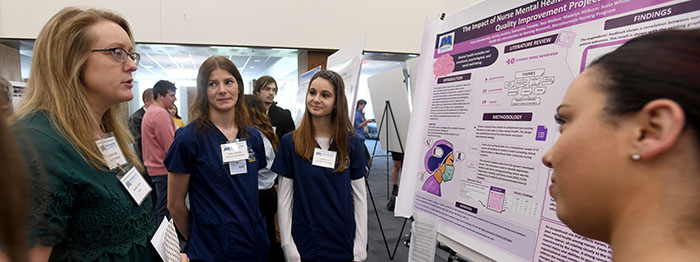Files
Download Full Text (930 KB)
Description
Overview:
• Electronic structure methods are being used to study the addition of CS2. OCS and CO2 to Group IV (MO2)n and Group VI (MO3)n (n = 1, 2, 3) nanoclusters, beginning with the MO2 and MO3 monomers according to a "bottom-up" approach.
• Physisorption is a process in which molecules bind through Van der Waals interactions. The enthalpies of these reactions are rather low, and these interactions are usually favored at lower temperatures.
• Chemisorption is adsorption in which chemical bonds are broken and/or formed therefore, an entirely new chemical species is formed.
• CS2 OCS and CO2 absorbed clusters of TiO2 and CrO3 were first optimized with harmonic vibrational frequencies calculated at the wB97X-D/aD level to provide starting structures for more accurate optimizations than the B3L YP/aD level.
• The density functional theory (OFT) calculations in this study provide structures and vibrational frequency thermodynamic corrections for expanding upon by way of single point correlated molecular-orbital theory (MO) calculations, mainly CCSD(T), to study the structures and energies which could arise from Lewis acid-base addition (physisorption) and formation of cosz2- (chemisorption) of CS2 to these clusters will be predicted.
• All LBE Values reported in kcal/mol.
Publication Date
4-17-2024
Disciplines
Higher Education | Scholarship of Teaching and Learning
Recommended Citation
Blair, Marissa; Dixon, David A.; and Lee, Zachary R., "Predicting the Reactions of CS2 ,OCS, and CO2 with Group IV and Group VI Transition Metal Oxides" (2024). 2024 Celebration of Student Scholarship - Poster Presentations. 18.
https://scholarworks.moreheadstate.edu/celebration_posters_2024/18


